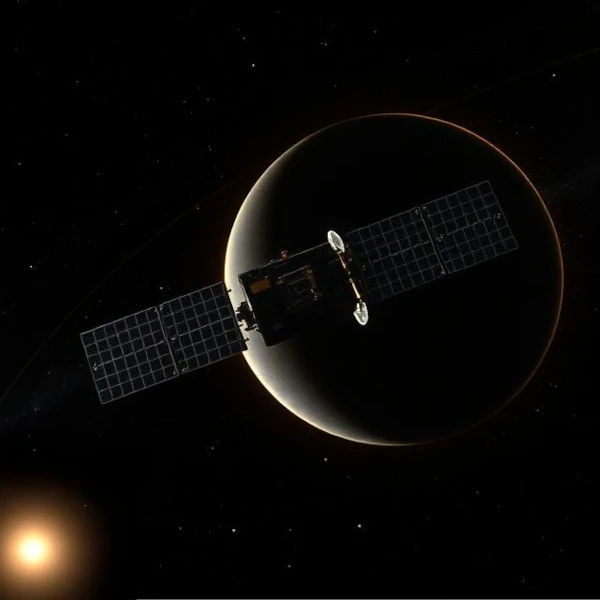
Space probes are robotic vehicles designed to explore the solar system and beyond. Unlike Earth-orbiting satellites, they are intended to travel long distances and transmit scientific data back to Earth. Their design often includes specialized instruments to measure the composition of atmospheres, soils, and magnetic fields.
The first space probes were developed in the 1960s, primarily to study the Moon and nearby planets. The main objective is to collect in situ or remote data to better understand the formation and evolution of the solar system.
Probes carry a variety of instruments:
Chemical propulsion remains the most common, but technologies like ion engines allow for more efficient travel over long distances. Navigation relies on precise calculations using the gravitational forces of planets to achieve complex trajectories.
Since the launch of Mariner 2 (1962), many missions have studied planets, asteroids, and comets. These missions have laid the foundation for modern understanding of space exploration.
The Mariner 2 mission was the first probe to fly by Venus, providing crucial measurements of the planet's atmosphere and temperature.
Launched in 1977, Voyager 1 and Voyager 2 explored Jupiter and Saturn, then the outer planets. They used gravitational assists to reach speeds allowing them to enter interstellar space.
Launched in 1989, Galileo was the first probe to orbit Jupiter. It provided detailed information about its moons, including the discovery of an ocean beneath the icy surface of Europa.
The Cassini-Huygens mission (1997) studied Saturn, its rings, and its moons. The Huygens module landed on Titan in 2005, providing the first images of its surface and data on its dense atmosphere.
The Rosetta mission (2004) studied comet 67P/Churyumov-Gerasimenko, deploying an orbiter and the Philae lander. It enabled a detailed analysis of the comet's chemical and isotopic composition.
This probe, launched in 2006, flew by Pluto in 2015, providing unprecedented images and data on its surface and moons. It then continued to Kuiper Belt objects to expand our understanding of trans-Neptunian bodies.
Launched in 2011, Curiosity explored Gale Crater on Mars, analyzing soil and rock to determine past and present conditions favorable to life.
The Perseverance mission, launched in 2020, continues Martian exploration by searching for signs of ancient life and testing technologies for future manned missions.
| Mission | Launch year | Objective | Scientific results |
|---|---|---|---|
| Mariner 2 | 1962 | Venus | Temperature and atmospheric measurements of Venus |
| Voyager 1 | 1977 | Jupiter, Saturn, interstellar medium | Detailed images of planets and solar wind measurements |
| Galileo | 1989 | Jupiter and its moons | Discovery of ocean beneath Europa's surface and detailed studies of Jupiter |
| Cassini-Huygens | 1997 | Saturn, Titan, Enceladus | Ring analysis, Titan landing, and data on Enceladus' oceans |
| Rosetta | 2004 | Comet 67P/Churyumov-Gerasimenko | In situ analysis of comet composition and dust |
| New Horizons | 2006 | Pluto, Kuiper Belt | High-resolution mapping of Pluto and its moons |
| Curiosity (MSL) | 2011 | Mars, Gale Crater | Geological analysis and study of Mars' past habitability |
| Perseverance (Mars 2020) | 2020 | Mars, Jezero Crater | Search for signs of ancient life and preparation for manned missions |
Source: NASA Missions and ESA Rosetta.
Future space probes will focus on more distant targets within the Solar System, such as trans-Neptunian objects, asteroids, and comets. The integration of AI will allow probes to perform autonomous analyses, optimizing data collection and real-time decision making.
Future missions will aim to better understand the giant planets, their moons, and Kuiper Belt objects. The focus will be on studying subsurface oceans, the geology of icy surfaces, and the chemical and isotopic composition of celestial bodies. Advanced technologies will enable sending more sophisticated and autonomous instruments to extend mission duration and efficiency.
AI will enable probes to react to unexpected events, select areas of interest for study, and reduce the delay between data collection and analysis.